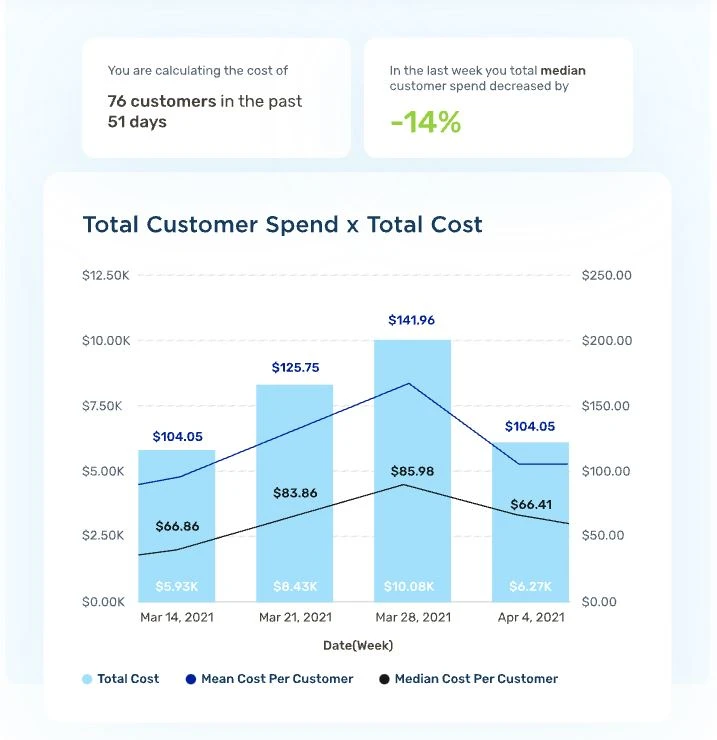For any company working in the cloud or using managed cloud services to create products, cloud costs represent a significant expense. If you lead an engineering team, you may have to defend your bill to your CEO or CFO.
But here’s the challenge: Cloud costs can be difficult to communicate because engineers and executives often think about cost from different perspectives.
As an engineer, you may think of costs in terms of AWS services, such as EC2 instances, storage, etc. that are used to deliver your product. While your CEO or CFO may understand those terms, they mean nothing in terms of bottom-line business objectives.
Making sure that your engineers and executives are on the same page with regard to cloud costs is crucial in order to have more productive conversations and make smarter decisions about your cloud environment.
So what does C-suite need to know about cloud costs, and how can you communicate that information most effectively? Below are three things we recommend doing to make sure they get the pertinent information needed for informed decision-making.
3 Strategies To Employ When Communicating With Your C-Suite About Cloud Costs
1. Set clear expectations about cloud costs
The most important concept to clarify from the beginning is that cloud costs scale with your business. For the most part, cloud costs grow linearly as your business grows — make this reality clear to business executives.
If you are migrating to the cloud from an on-premise model, explain that operating in the cloud is not inherently cheaper than running an on-premise model. The primary value of the cloud is the ability it gives you to innovate and scale infinitely.
So, in your conversations with executives, be sure to emphasize the overall benefits of operating in the cloud, beyond cost savings. If those benefits are not clearly communicated, your executives may think the migration project was a complete loss, especially if your cloud costs are on par with or higher than your on-premise costs.
2. Always explain the impact of new initiatives on cloud costs
It’s also critical to understand and convey how new products, business lines, or models will impact your cloud costs and what that means for important business objectives. This information will help you empower other executives to make smarter business decisions.
For example, a new product or feature that is expected to bring in more revenue may need more cloud capacity because of increased server pings, data collection, or customer visits.
Communicate those cost implications in a way that is meaningful to your CEO or CFO. For example, you could say: “This new feature calls our server 10 times per customer and will cost us $X each time it pings our service.”
3. Share insight on the most expensive cost areas
Collaborate with your engineering team to understand the most cloud-heavy parts of your business.
While your product may have several features, one or two of those may be contributing the most to your costs. That tidbit of information, even if it’s not completely verified, could be all the context your CFO needs to accurately understand the flow of the money.
For example, an internal R&D testing exercise that causes a spike in costs and increased customer clicks that cause the same outcome will be assigned differently on a profit and loss statement.
Improve Cost Communication With CloudZero
Conversations around cloud costs are often unproductive because it’s difficult to assign them to specific business areas.
For example, you may know you’re spending $X in AWS fees every month, but your product may have several features or hundreds of customers. How do those features and customers contribute to that spending? Do you know your most expensive customer and how much it costs to maintain them?
Without this level of insight into your cloud bill, you won’t have the data you need to build cost-effective applications, and executives won’t have the data they need to make critical pricing decisions.
CloudZero’s cost intelligence platform solves this problem and more. See how you can use CloudZero to align your cloud costs to the metrics that are most important to your business — and make it easier for the C-suite to use cost information more strategically.

More importantly, you can make this cost data available to engineers, the finance team, and other business executives without giving access to your master billing account.
This way, your engineers understand how their activities impact cost, and executives have the information they need to make pricing and budgeting decisions.  to learn more about how CloudZero improves visibility into your cloud costs.
to learn more about how CloudZero improves visibility into your cloud costs.








